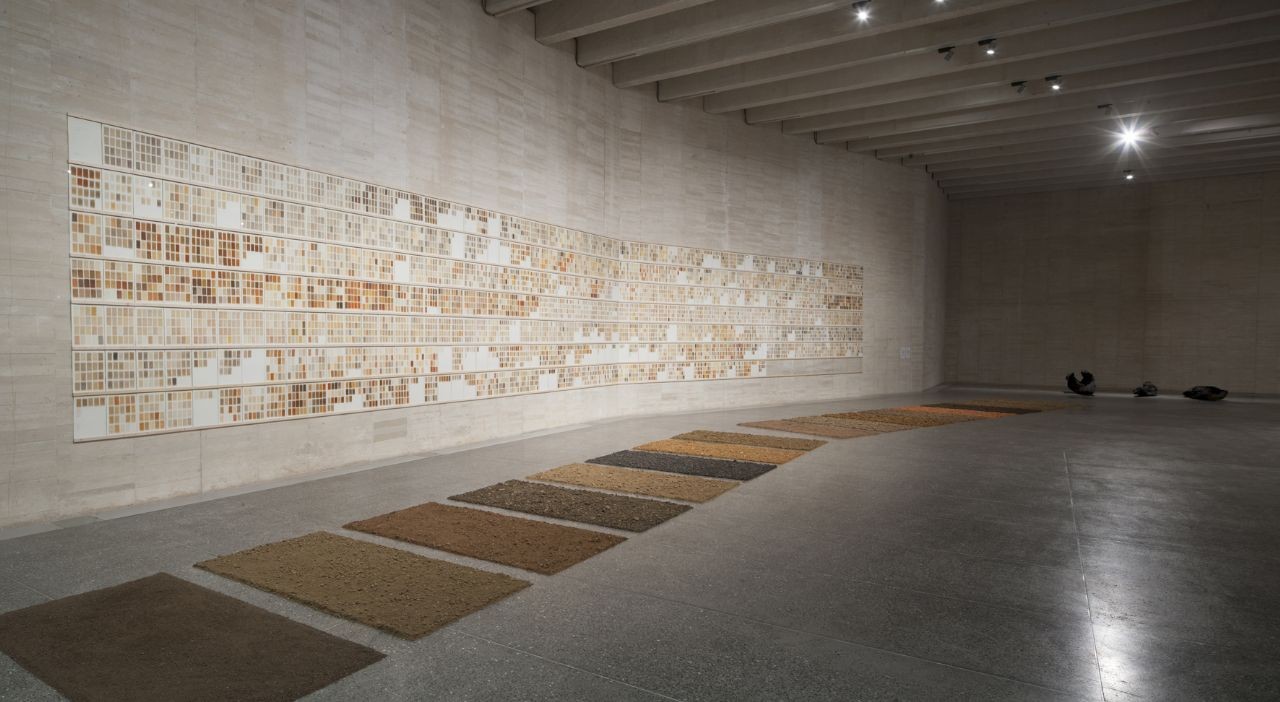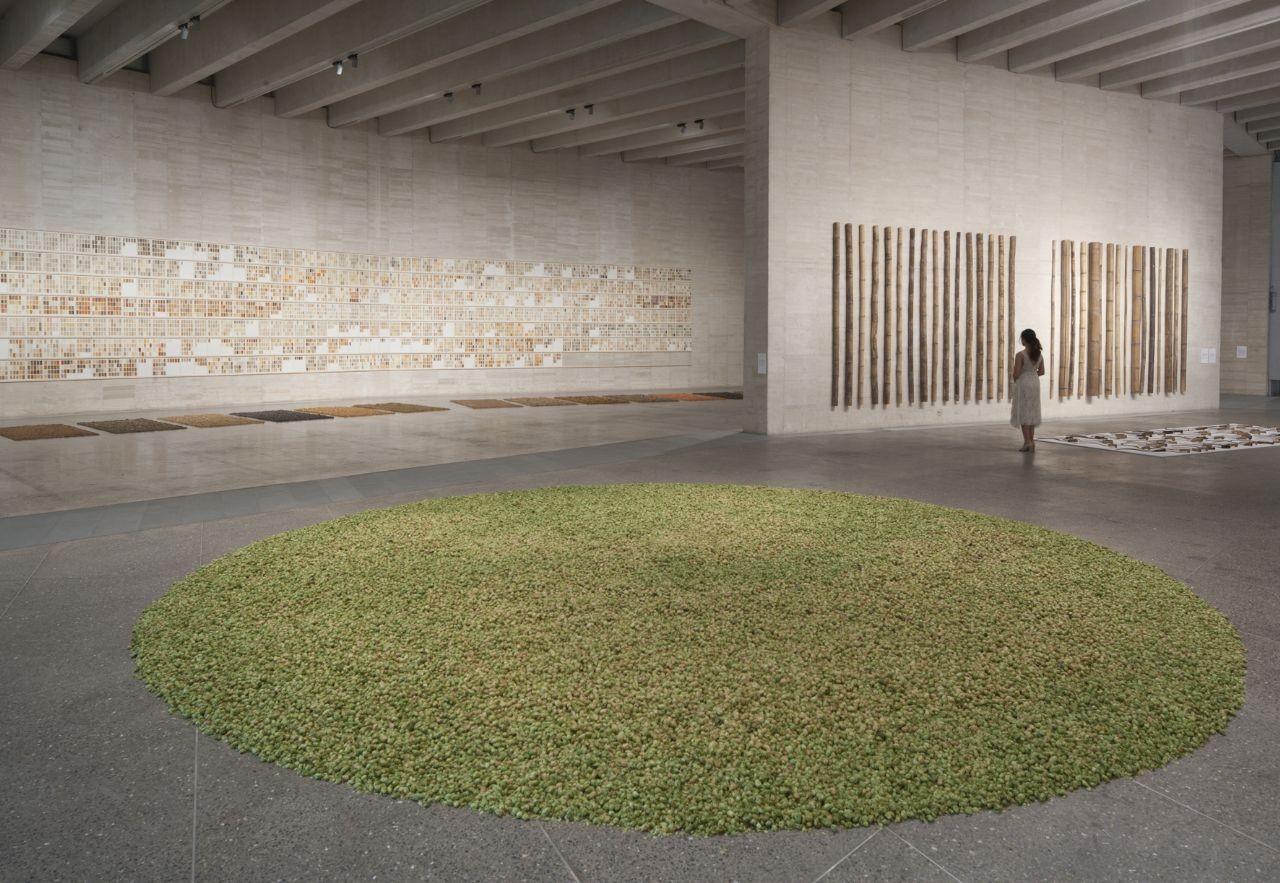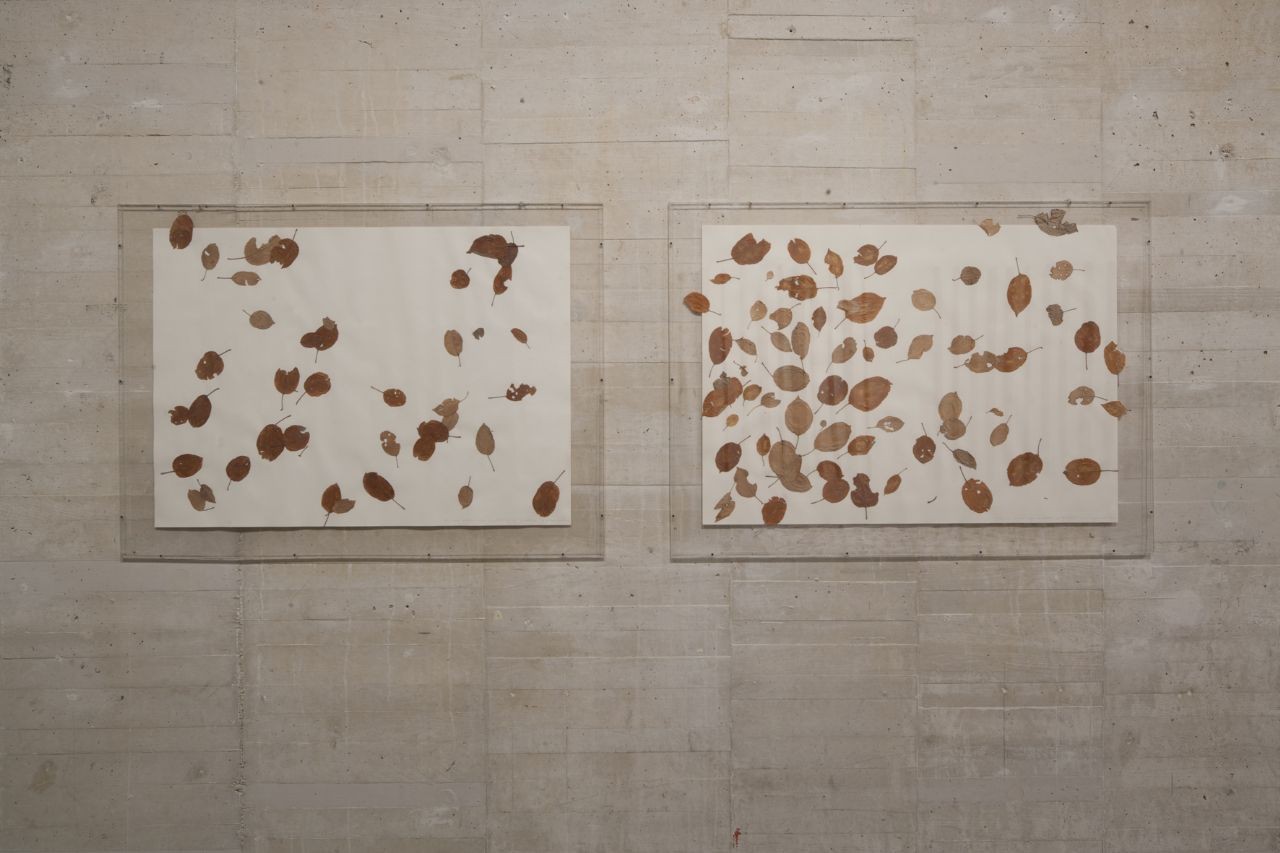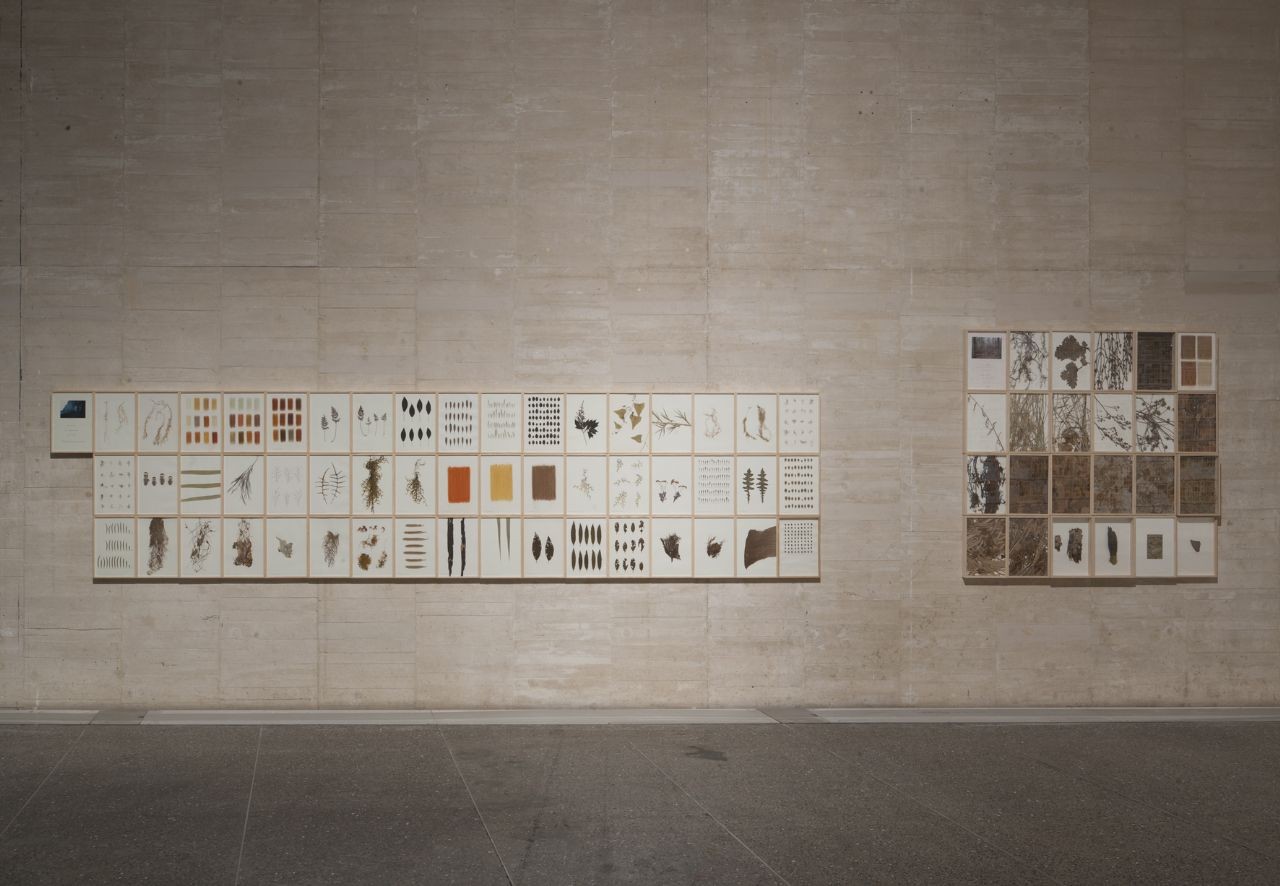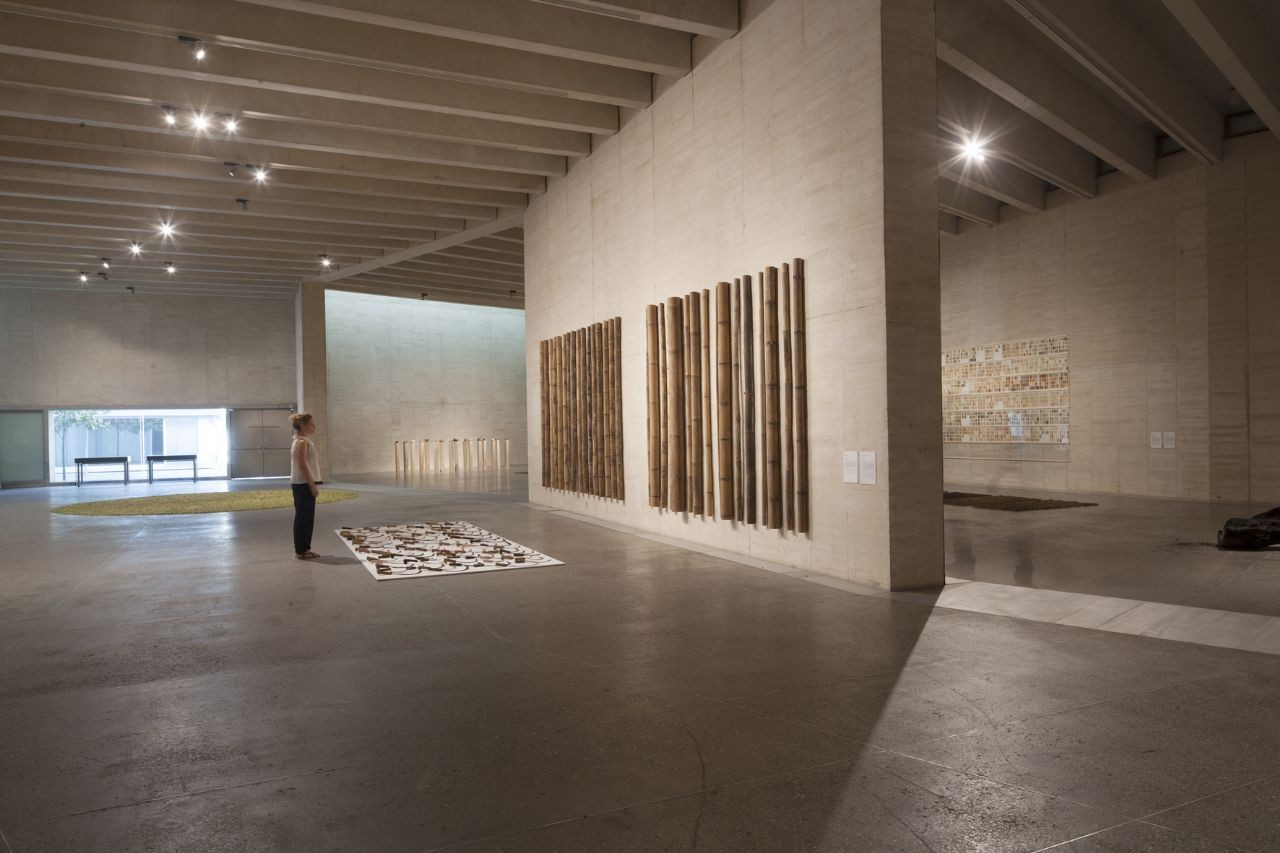chance & change
17 Jun 2017 - 04 Feb 2018
CHANCE & CHANGE
17 June 2017 - 4 February 2018
Curatorship: Kristine Guzmán
Coordination: Raquel Álvarez
chance & change is the first individual exhibition in Spain of the Dutch artist herman de vries (Alkmaar, The Netherlands, 1931). This retrospective show spans an extensive period of more than fifty years, and includes early “informal” works as well as site-specific productions where nature is presented as the work of art itself.
As a member of the avant-garde group Nul and of the international network ZERO in the 50s, de vries searched for new relations between art and reality, fleeing from colorful expressionism to adopt an absence of a personal signature. He found this neutrality in monochrome, in repetition and seriality and in the direct use of everyday materials and objects. As a result, he created collages of white paper on a white background, white sculptures or white paintings.
These white works had an intention of pure objectivity, one of the principles of the ZERO group. However, his fascination with the natural world, accompanied by a growing interest in language and philosophy, especially Ludwig Wittgenstein’s Tractatus Logico-Philosophicus, as well as Buddhist or Taoist writings, have influenced his later works without leaving the spirit of ZERO.
Trained as a horticulturist, de vries worked at the Institute for Applied Biological Research in Nature at Arnhem, The Netherlands, as an applied biologist for over sixteen years. During this time, he had to make experiments using the concept of chance in order to determine aspects such as the distribution of natural elements, mineral deposits and plant and animal life. Thus surged the series random objectivations, that pretended to eradicate everything personal or subjective—principles that his informal works already advocated—using the concept of chance as it is applied in scientific experiments.
In 1975, de vries concluded that no model or reproduction can be as complex as to be able to represent the complexity of nature. From that moment on, de vries started to live in accordance with his ideas about the order of nature where he co-exists without hierarchy. Thus, he decided to write his name in lower case as an expression of his belief in equality and his opposition to any hierarchy. de vries feels one with nature which he considers his primary reality and on which human existence is based on.
1 and 3 hours beneath my apple tree (1975) is the earliest work where de vries tries to demonstrate the principle of randomness as it is obtained in nature. He fixed the leaves as they had fallen from his apple tree, in a seemingly random configuration, making visible that which people do not normally see: randomness and chance. chance & change is thus de vries’s dynamic version of the principle of evolution, taking into account not only the development but also the variation of the species. A variation that is present in all of nature, and which he presents in works such as bamboo (2014), die steine [stones from the province of león] (2017) or even in tools such as the sickles (from spain) (2017).
de vries works on the idea of chance & change as an artist, scientist, philosopher and poet, and believes that existence depends on “chance fields.” This chance field may be a tiny parcel of 16dm2 earth where 472 different types of plants can be found. Change creates possibilities of chance; chance creates possibilities of change. Nothing is permanent, everything evolves. Like the huge trunks of a burned tree in burned III (2014-2015), transformed and metamorphosed by fire to become shiny, black sculptures.
His work process becomes evident in the journals that he produces from his travels or walks, such as the journals de la gomera or knetzberg, composed of samples of different objects, natural elements or photographs of these places that form a visual record of an experience. However, more than visual, his work is a total sensory experience that pervades us with the different colors of the earth like in the catalogue earth museum (1978-2016), the smell of humulus lupulus (from carrizo de la ribera, león) (2017), or the sound of the artist’s respiration in hear my breath – i am alive (2016).
With this exhibition, we invite you to look and open the senses to perceive the beauty, diversity and multiplicity of the world that surrounds us.
17 June 2017 - 4 February 2018
Curatorship: Kristine Guzmán
Coordination: Raquel Álvarez
chance & change is the first individual exhibition in Spain of the Dutch artist herman de vries (Alkmaar, The Netherlands, 1931). This retrospective show spans an extensive period of more than fifty years, and includes early “informal” works as well as site-specific productions where nature is presented as the work of art itself.
As a member of the avant-garde group Nul and of the international network ZERO in the 50s, de vries searched for new relations between art and reality, fleeing from colorful expressionism to adopt an absence of a personal signature. He found this neutrality in monochrome, in repetition and seriality and in the direct use of everyday materials and objects. As a result, he created collages of white paper on a white background, white sculptures or white paintings.
These white works had an intention of pure objectivity, one of the principles of the ZERO group. However, his fascination with the natural world, accompanied by a growing interest in language and philosophy, especially Ludwig Wittgenstein’s Tractatus Logico-Philosophicus, as well as Buddhist or Taoist writings, have influenced his later works without leaving the spirit of ZERO.
Trained as a horticulturist, de vries worked at the Institute for Applied Biological Research in Nature at Arnhem, The Netherlands, as an applied biologist for over sixteen years. During this time, he had to make experiments using the concept of chance in order to determine aspects such as the distribution of natural elements, mineral deposits and plant and animal life. Thus surged the series random objectivations, that pretended to eradicate everything personal or subjective—principles that his informal works already advocated—using the concept of chance as it is applied in scientific experiments.
In 1975, de vries concluded that no model or reproduction can be as complex as to be able to represent the complexity of nature. From that moment on, de vries started to live in accordance with his ideas about the order of nature where he co-exists without hierarchy. Thus, he decided to write his name in lower case as an expression of his belief in equality and his opposition to any hierarchy. de vries feels one with nature which he considers his primary reality and on which human existence is based on.
1 and 3 hours beneath my apple tree (1975) is the earliest work where de vries tries to demonstrate the principle of randomness as it is obtained in nature. He fixed the leaves as they had fallen from his apple tree, in a seemingly random configuration, making visible that which people do not normally see: randomness and chance. chance & change is thus de vries’s dynamic version of the principle of evolution, taking into account not only the development but also the variation of the species. A variation that is present in all of nature, and which he presents in works such as bamboo (2014), die steine [stones from the province of león] (2017) or even in tools such as the sickles (from spain) (2017).
de vries works on the idea of chance & change as an artist, scientist, philosopher and poet, and believes that existence depends on “chance fields.” This chance field may be a tiny parcel of 16dm2 earth where 472 different types of plants can be found. Change creates possibilities of chance; chance creates possibilities of change. Nothing is permanent, everything evolves. Like the huge trunks of a burned tree in burned III (2014-2015), transformed and metamorphosed by fire to become shiny, black sculptures.
His work process becomes evident in the journals that he produces from his travels or walks, such as the journals de la gomera or knetzberg, composed of samples of different objects, natural elements or photographs of these places that form a visual record of an experience. However, more than visual, his work is a total sensory experience that pervades us with the different colors of the earth like in the catalogue earth museum (1978-2016), the smell of humulus lupulus (from carrizo de la ribera, león) (2017), or the sound of the artist’s respiration in hear my breath – i am alive (2016).
With this exhibition, we invite you to look and open the senses to perceive the beauty, diversity and multiplicity of the world that surrounds us.

